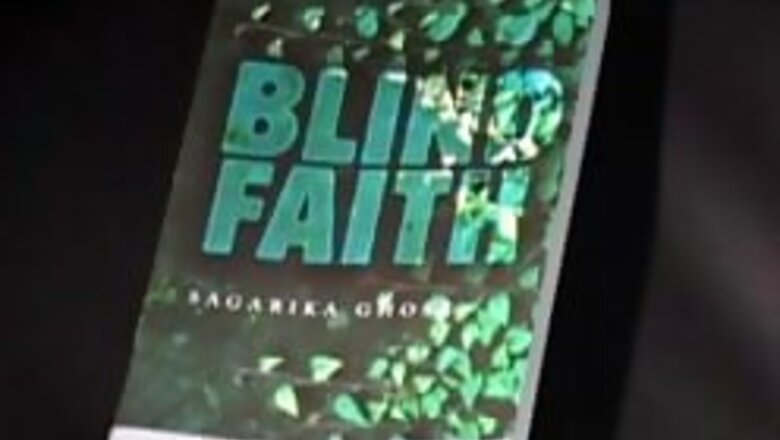
views
The author’s note at the beginning of the 273-page saga says it all – for all those willing to make a leap of faith.
And a leap it is.
A leap guided by a Blind Faith that the two female protagonists repose in love and hatred respectively.
A Blind Faith that makes the leading men - with well-etched out roles - succumb to their own passions.
Mia, a London-based journalist is depressed.
Her Naxal rebel turned painter turned philosopher father has committed suicide by jumping to a cold, indifferent death in the freezing Thames.
Her newly-widowed mother Mithu is aching to don the bridal finery again but cannot do so till her very marriageable and father-doped daughter decides to tie the knot.
But Mia, who prefers obsessing over The Drama of Depression in her father’s oil-and-turpentine house, cannot be persuaded, until...
Until she comes across Karna, who seems to have walked straight out of her father’s painting of the Kumbh Mela.
That’s when Mia makes her leap of faith.
She is taken in by Karna’s aura, his enigmatic sense of “mission”, his addressing her as ‘Maya’ and most of all, his uncanny resemblance to her father’s painting character.
She would chase the street-tramp-like sadhu to India, all the way to the banks of Ganges for the Kumbh Mela, even if means marrying the “sextremely” savvy makeup magnate Vik - who her mother has found for her.
Cut to Alqueria, Goa.
There’s Indi, or Indira Ray. The brutally beautiful Indira, the inordinately attractive Indira, Indira of the stormy eyes, the voluptuous body with a “whore-like” sensuality about her - Indira the Magasaysay awardee, the fawned-over retired IAS officer-turned hotel owner.
Indira – the blind wildflower. Indira who has made countless leaps of faith by overcoming her blindness, her father’s proud jealosy, her mother’s paranoia and her husband Vikram’s death acquires a myth-like stature.
She lives on the shore of the sea with her American lover Justin who has spent four decades wasting himself to rags in her admiration.
Indira and Justin, not united by matrimony are Vik’s parents.
PAGE_BREAK
While Indira seeks a sadistic revenge on his son - mercilessly feeding him chocolates till he becomes a juvenile diabetic - Justin plays the godfather to the unknowing boy.
The narrative, while exploring the various facets of human nature, treads on a delicate territory where monotonous life presents itself in a new format - against the multi-hued backdrops of London, New York, Delhi and Goa - and the Maha Kumbh becomes the grand venue of enlightenment.
Mia, while figuring out her anguished mother-in-law and her husband placid yet passionate love, also discovers the other side of life on the banks of Ganges.
Essentially a piece of pulp fiction, Blind Faith acquires the status of a parable due to the sheer intensity of characters and the meticulous detailing of peoples and situations that populate the narrative.
From the dingy bylanes of Delhi where sweaty men ogle at the very-firang Mia to the detailed, almost graphic description of the Kumbh Mela - the author’s keen eye for detail is engrossing.
The novel manages to evoke a thought on the state of a country richly endowed with heritage and packs more than a thought a page.
However, though the verbose nature of writing makes for easy understanding of the subject, the complex nature of the multi-layered characters makes sure that one needs to take a breather after every 10 pages to soak in the effect.
An honest confession here.
Considering that I couldn’t go beyond the first 50 pages of the much-appreciated The Gin Drinkers two years ago, I was a little paranoid of reading a book that was so frighteningly titled as Blind Faith.
But this book certainly is certainly a far cry from the author’s previous work.
What makes Blind Faith worth more than a read is the fact that every situation, every change of weather, people and situation and some bit of every character is identifiable.
My personal favourite remains the much fawned-over, mythical Indira Ray who towers over the rest - perhaps even the central narrative at some point.
Read it, if you are ready to make a leap of faith – a leap of Blind Faith.
 Sagarika Ghose is a senior editor and prime-time news anchor at CNN-IBN. She maintains her blog here.
Sagarika Ghose is a senior editor and prime-time news anchor at CNN-IBN. She maintains her blog here.



















Comments
0 comment